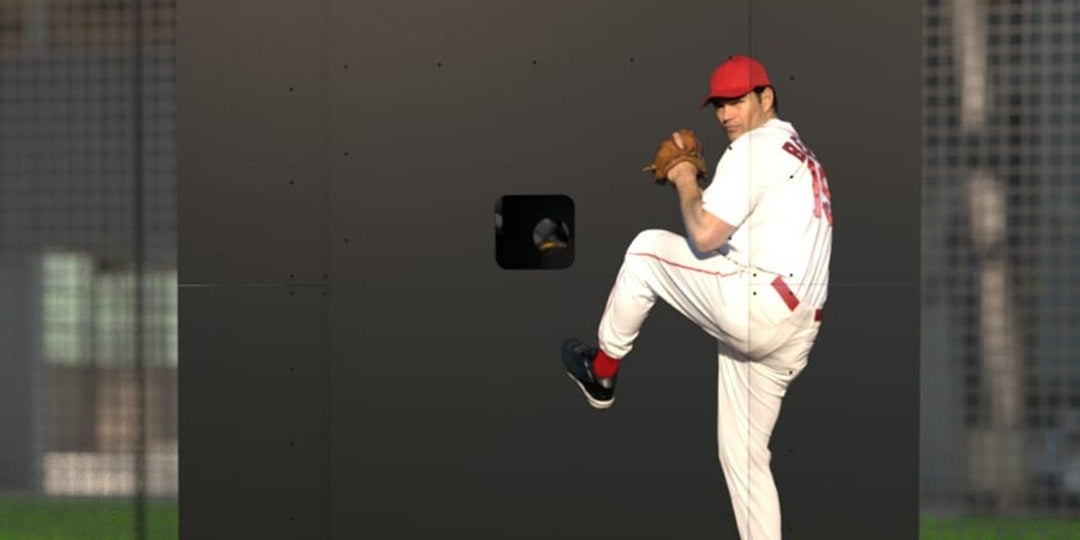What? Robots replicate reality: High-tech pitching machine mimics every pitcher
Nestor Cortes got behind the plate in a batting cage and watched an 8-foot-high, 1,200-pound robot spit out fastballs, cutters and sweepers just like the ones spinning off the fingertips of his left hand.
“It was like seeing myself pitch. That was crazy,” the New York Yankees All-Star left-hander said.
Technology has come a long way since the days of the Iron Mike.
“You’re training their brain. You’re training their eyes,” Philadelphia hitting coach Kevin Long said.
Each machine costs $15,000 to $20,000 a month as part of a three-year lease, an unimaginable leap forward from the pitching gun invented by Princeton mathematics professor Charles Howard Hinton in 1896 that looked like a 2 1/2-foot-long cannon.
Paul Giovagnoli turned the concept into a business. He owned golf driving ranges in Wichita and Topeka, Kansas, wanted to add baseball and created what become known as the Iron Mike. Giovagnoli founded Master Pitching Machine in 1952, and its units with long metal arms became omnipresent throughout the majors.
By the mid-1970s, machines with spinning wheels entered the market, the better to replicate breaking balls, and the Yankees had three at $1,600 each at spring training in 1978.
Those models have gone the way of flannel uniforms.
Spinball Sports’ iPitch Smart Machine retails for $14,000 and is programmed with 16 built-in pitchers with 140 pitches. Company sales manager Sam Root says there are more than 100 of its iPitch machines among 27 MLB teams and units are at 15 Division I college conferences.
Joshua Pope took it a step further. He was a senior at Tanenbaum CHAT high school in Toronto in 2014 and was talking with friends about how many swings it would take for them to get a hit off Marcus Stroman, then a top Toronto Blue Jays rookie. Having had a couple shoulder surgeries, Pope knew his career wouldn’t be as an athlete. He applied to the University of Waterloo in Ontario in part because John McPhee a mechanical engineering professor there, had developed a hockey slapshot robot.
“We had a theoretical modeling approach to how we could create a machine to replicate gyro spin,” Pope said.
Data was publicly available. MLB installed Sportvision’s PITCHf/x in 2006 and then its more detailed Statcast system for 2015, which runs on Hawk-Eye data. All teams get Hawk-Eye, and some now supplement it with information from KinaTrax Motion Capture, Simi Reality Motion Systems and DARI Motion.
During his five-year college program, Pope received a grant of $60,000 Canadian and raised financing to built a prototype. He became CEO of the new company founded in 2019 and recruited Rowan Ferrabee, a Waterloo mechatronics engineering student, to be chief technology officer. They originally called their firm SimulatePro but changed it to Trajekt Sports — Traject with a normal spelling was taken and they liked the K because of its use for strikeouts in baseball scoring.
Working at Velocity, a startup hub in Kitchener, Ontario, from April 2019 to March 2020 — and then in the garage of Pope's parents after the coronavirus pandemic began — they developed a machine that controls 11 of 12 degrees of freedom for pitches, maintaining only a fixed release point of 56 1/2 feet from the plate.
They presented a demo of the ball inserter and user interface at the 2019 winter meetings, and Chicago Cubs director of Innovation Bobby Basham agreed to a three-week spring training trial in 2021. Trajekt reached deals for seven teams in 2022 and now has 20 teams with about 45 machines — including a club in Japan that started last season. Until this year, MLB limited use to before and after games.
Trajekt trains a team’s data and video staff and sends two people for installation, which takes a day or two. Teams appear to prefer using softer Rawlings L10 training balls to lessen broken bats.
Phillies All-Star catcher JT Realmuto spends about an hour before each game going over the data on opposing hitters, writing notes that he takes to the dugout and reviews before each defensive half inning.
“It’s cool to see how far data driven baseball things have come,” Realmuto said. “Obviously, analytics are a huge part of our game now. Analytics were going on 20 years ago, it’s just we didn’t really know how to understand it and how to transfer it into real time.”
MLB began regulating on-field technology in 2016 and has approved six products for in-game, on-field use this year: 4D Motion’s kinematic/movement tracker, Catapult’s GPS tracker, STATSports’ GPS tracker, Pulse’s Motus Sleeve that measures biomechanics and heart monitors from WHOOP and Zephyr. In addition, two bat sensors from Blast Motion and two from Diamond Kinetics are approved for on-field use during workouts.
“It’s a lot of vetting. It’s important to keep your eyes on emerging technologies but it requires a lot of work,” Phillies general manager Sam Fuld said. “It’s not as simple as snapping your fingers and investing in a piece of technology that looks interesting. You’ve got to make sure you’re making the right choice because with it comes a lot of human capital that’s needed to operate the tech. If there’s data associated with the tech, there’s a lot of bandwidth required to make meaning of that data.”




